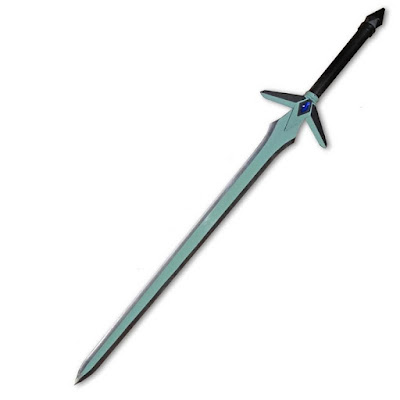The swords that medieval knights and other warrior class swordsmen used during the Medieval period of time were made to excel in combat. These blades were usually made from high-grade steel (it was said that anything less was not worth using), sometimes with a blade on one side, but many more with two edges on either side of the hilt.
The medieval swords were
often decorated with engravings, such as crosses or snakes for protection
against these bad beasts and dangerous animals. Hilts consisted of solid pieces
of metal that could sometimes have a crossguard integrated into them or be
constructed entirely out of wood or bone.
How Did a Knight Choose a Sword?
A knight had to choose between a light sword and a heavy, broadsword. This depended on their role on the battlefield. A lighter sword was preferred for those who practiced on foot, whereas a heavier one was used by horsemen or knights. The blade of this kind of sword is usually long and narrow, often with a fair amount of curve to the blade at its base (outward curve).
The pommel would also be hammer-shaped and made out of iron. The handle might be reinforced to create a better grip while fighting with it. The weight of these swords could vary from 2 pounds up to 3 or 4 pounds on average. The weight also depended on its size. The average length of the sword is usually 36 inches, with a handle of 6 inches that has a diameter of roughly 1 to 1.5 inches.
The blade extends past the crossguard and pommel and the edges are nearly parallel until they reach an end at a point that is slightly off-center. The point itself is usually in line with the guard (center). The overall size of these swords is approximately 3 to 4 feet long, rather heavy, and extremely sharp.
In order to withstand the force used
when taking down enemy soldiers or cavalry, these medieval swords have to have
proper guards (protectors) around their handles and also pommels (the
ball-shaped part that rests on the handle). Some swords have a very ornate
design of pommels, and some even had precious stones inlaid on them. The blade
of these types of swords are the following:
- Broadswords
Broadsword had a flat side and the
other side was curved to form the inner edge that sharpened. The grip is in a V
shape and made out of wood or bone. The pommel (ball-shaped end) is usually
enclosed with metal or hard leather that is often painted. These types of
swords are smaller than other medieval swords; typically about 32 inches long.
The blade itself has a length of
fewer than 3 inches but can extend to any length from 26–28 inches. However,
the entire sword is relatively heavy, normally ranging from 2.5 to 5 pounds.
- Longswords
Longsword, had a double-edged blade and usually came with a hilt made out of wood that had an intricately designed crossguard (metal protection). The sword was heavier than the broadsword and another example of a very ornate design for a pommel (ball-shaped end).
The blade itself could be up to 48
inches long, but the hilt length is about the same as the wooden grip (an
average of 24 inches). The blades of these swords are usually 10–11 inches in
length.
- Two-Handed
Swords
Two-handed sword, had a double-edged blade that was around 48–50 inches long. The blade was wider and heavier than what the two-handed swords were made of. The hilt length is about the same as the other swords, approximately 24 inches.
Similar to all other swords, these
types of weapons have guards (metal protection) on both sides of the handles
and pommels (ball-shaped ends). The blades are generally very sharp and can
weigh up to 6 pounds.
Purpose of Medieval Swords!
Most medieval swords were only used as a weapon in combat, however, some were designed for fashion or decoration and they did not serve any practical purpose apart from being a showpiece or ornamentation piece.
These swords which were created for ornamental purposes became an important part of the development of a new family of swords which later on became known as the 'saber' type sword. Although they were not as popular or widespread during this era, they were used by certain wealthy individuals in order to distinguish themselves from the rest.






